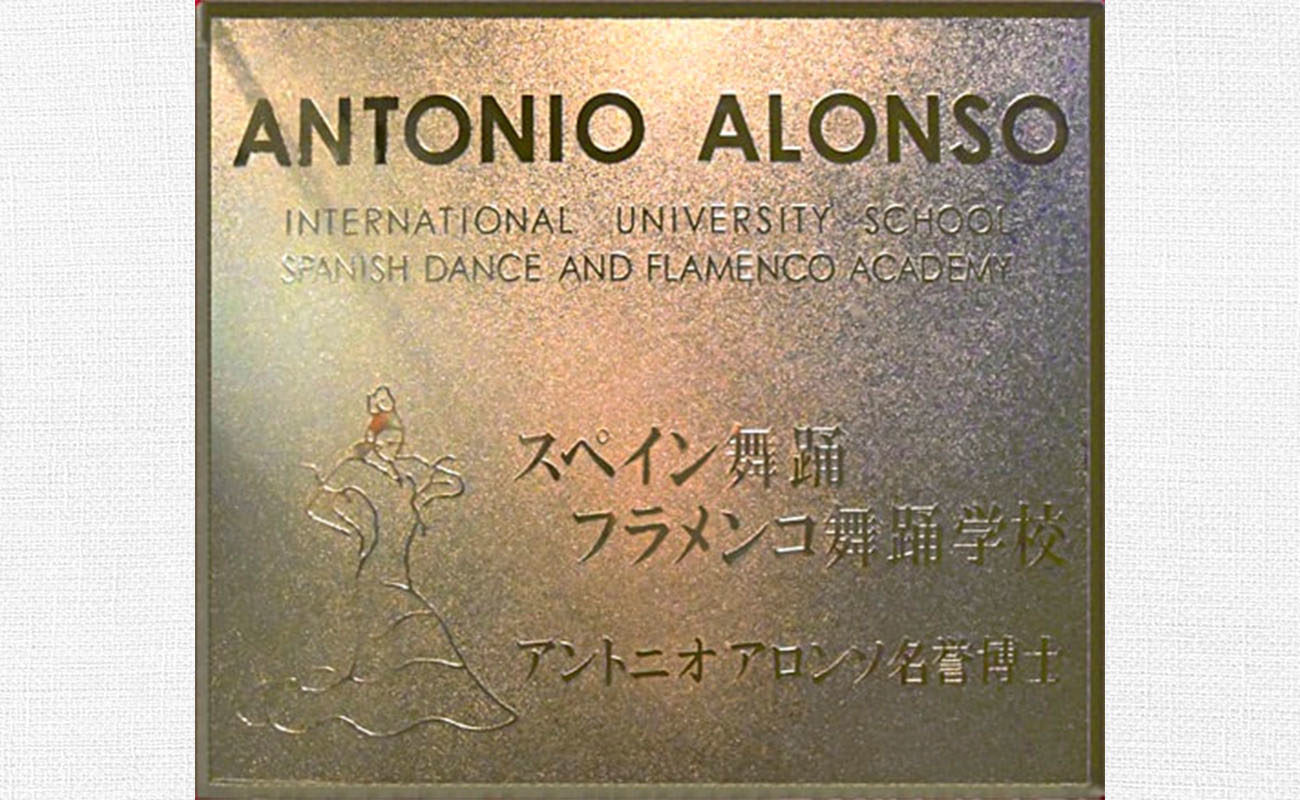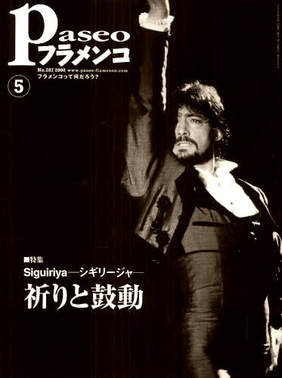Grandpa and Antonio Alonso
-Grandpa, there is an artist who admires and follows you, the dancer and choreographer Antonio Alonso, born in Madrid but now living for many years in Tokyo (Japan), where he has done a fantastic job. Both his professional and personal careers have a lot of merit. He’s a fighter and an artist from head to toe. -Oh! Antoñito Alonso! Merceditas León,

-Grandpa, there is an artist who admires and follows you, the dancer and choreographer Antonio Alonso, born in Madrid but now living for many years in Tokyo (Japan), where he has done a fantastic job. Both his professional and personal careers have a lot of merit. He’s a fighter and an artist from head to toe.
-Oh! Antoñito Alonso! Merceditas León, daughter of Frasquillo and La Quica, did a pretty good job teaching him. You should have seen Mercedes’ grace when she danced. His mother was a great dancer, too.
-Grandpa, I’ve seen him dance many times, but I remember one time in particular, when Mario Maya’s Requiem premiered for the Compañía Andaluza de Danza. Diego Lori also performed, and that was just spectacular. The image of Antonio’s dramatic strength remained etched in my mind for many months.
-Antonio is one of the great artists of Spanish dance. I’ve seen him dance El sombrero de tres picos and La farruca del molinero, y both were delightful. Zapateado, too, with music by Pablo Sarasate and choreographed by Antonio Ruiz Soler. The history of the Ballet Nacional de España could not be conceived without this artist of dance and flamenco.
-These days we have to be careful about what is and isn’t flamenco, grandpa, we may get in trouble.
-Look, Manolito, before flamenco, the “arte jondo”, even existed, Spanish dance had already captivated the whole world. I’m referring to the days of the escuela bolera, in the middle of the 19th century, with revolutionary artists such as La Nena, Petra Cámara, her husband Maestro Guerrero and Francisco Ruiz. That was the Spanish or Andalusian dance, because the other dance, Gypsy, so-called flamenco, was kind of hidden, as it was an art belonging to some families in Lower Andalusia from Triana, Jerez, Cádiz, El Puerto, Lebrija or Utrera. El Maestro and Ángel Pericet, among others, draw a lot from that school, and from that mixture between escuela bolero and Gypsy dance, came out flamenco, the dance which got in the cafés cantantes of El Burrero and Silverio. Separating flamenco from traditional Spanish dance is not easy. I’ve seen Antonio Alonso dancing a farruca, for example, and it was a first-class flamenco performance. He has an incredible technique, and without a good technique, Manolito, it’s impossible to master any type of dance.
-Do you know why he ended up in Japan, and why he is still there?
-Yes, of course. He performed in Japan in the 1980s, and he liked it so much that he decided to settle in that country. He moved to Japan in 1997, thinking he would live there a couple of years, but his life took a few turns. He opened an studio in Tokyo’s Roppongi district that same year, having almost 40 students, and he fell in love with one of his students. What a beautiful story. He is still there. More than 10,000 students have been trained in his studio, it’s a very important school of Spanish dance, including flamenco, of course. Antonio is already a full-fledged Japanese, without a doubt. He has a Japanese daughter, by his wife. The life of this artist is worth of a movie.
-Grandpa, don’t you think it’s rather unfair that artists such as Antonio Alonso and others who work overseas are all but forgotten in Spain? He has taught thousands of dancers from Japan and from other countries. He has produced more than twenty shows and created more than sixty choreographies for flamenco palos. Such accomplishments should be acknowledged in Spain, shouldn’t they?
-Without a doubt, Manolito. We talked about Antonio Alonso, but there are many Spanish artists all over the world who are doing a great job. When we see so many foreigners at the Bienal festival, that’s in great measure thanks to the work of Antonio and other artists in places like Italy, Germany or the USA.
-Antonio had great success with the premiere of The Tokyo Flamenco Ballet, where all bailaoras are Japanese, and half of the musicians are from Japan. When he was preparing the premier, he was diagnosed with a serious illness and the project was put on hold. Fortunately, he beat his cancer and the premiere was a huge success. That is, grandpa, the work of Antonio has a lot of merit and that should be recognized in Spain.
-Let’s hope that one day his work is acknowledged, yes.
-What’s for lunch, grandpa?
-Potatoes and Brussel sprouts.
-What the heck is that? Do you have anything against seabass?
-You can ask Rajoy, the Prime Minister, all about the sorry state of the Spanish economy.





